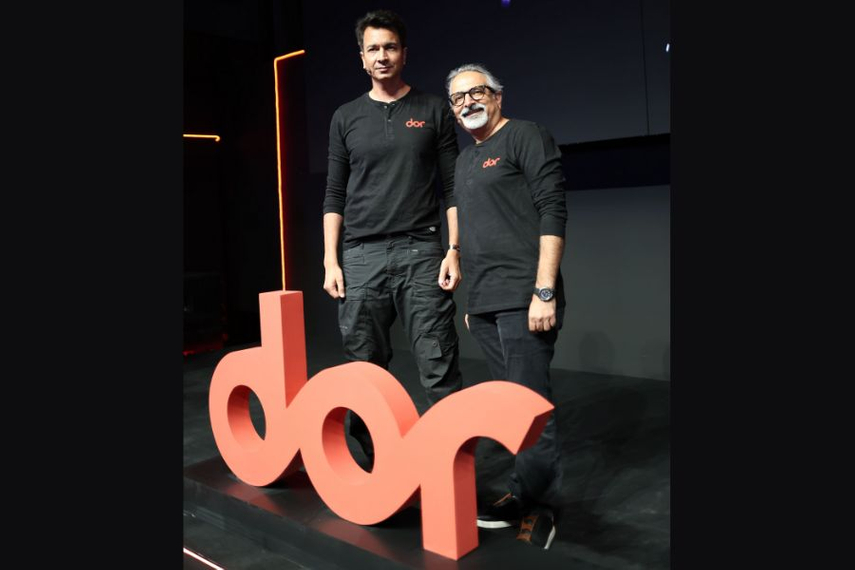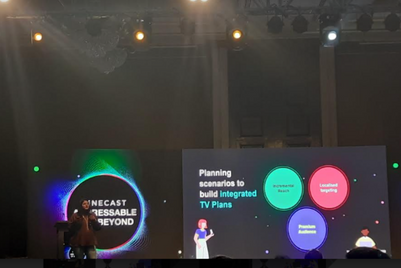
Yesterday Streambox Media unveiled Dor, a subscription-based TV service, which the company claimed could potentially reshape how consumers find and pay for content across multiple platforms. Touted it as disruptive, the service is set to challenge the established TV manufacturing and dish TV entertainment giants in a single swoop.
Financed by Zerodha co-founder Nikhil Kamath, along with Stride Ventures and Micromax Informatics, Streambox aims to address several key consumer pain points in the connected TV viewing experience.
At its core, Dor is an AI-driven operating system (OS) that aggregates content from 24+ OTT platforms including Prime Video, Jio Cinema, Disney Hotstar, Zee 5, Sony Liv, and YouTube, among others, and 300+ TV channels. The OS delivers this content to consumers through a single sign-on and subscription-based model.
Powered by AI, Dor OS allows viewers to find live television and OTT content of their choice simply through voice commands. The speech recognition engine understands several languages including the Indian languages. A viewer can utter a title of a movie or a web series or a TV programme, and the AI-search will deliver it accurately within seconds—across OTT platforms and TV channels.
Narrating his personal experience, Micromax Informatics co-founder Rahul Sharma said, “Just a couple of days ago, I wanted to watch the ongoing India-Australia cricket test series. But to do that, I had to first visit four to five OTT platforms and then even do a Google search to know which platform was showing it. Dor OS eliminates this hassle.”
Explaining the idea behind Dor’s subscription model, he added that younger audiences, Gen Y and Zoomers, prefer renting over owning, prioritising flexibility and value. “With Dor, we are introducing a market disruptor that meets these evolving consumer preferences,” he stated.
Dor OS allows users to personalise their home screens based on language, actors, and genres—pooling in content across platforms. Child-safe zone provides for age-appropriate content filtering while delivering cross-platform content suitable for children.
The universal subscription model introduced by Streambox Media aims to ensure that the user will not have to pay for every OTT platform or TV channel separately. While the current subscription package does not include Netflix, Anuj Gandhi, founder and CEO of Streambox Media informed that the popular OTT platform would be available within a couple of months in the same package—without any additional cost to the consumer.
Being powered by AI, Dor OS will analyse the viewing preferences and habits of the consumers for the next one year and offer customised packages starting from INR 299 based on the specific bundles that suit customer-needs, Gandhi informed.
To provide all this seamlessly, Streambox works with technology partners including Sensara Technologies, a company that specialises in video content discovery and monetisation, and Infimatrix Technologies, a company that offers multi-cloud-verse and data security management services.
Creating a market buzz
“The Indian connected TV ecosystem is rapidly evolving, with connected TV households expected to grow from 50 million to 100 million within the next five years,” said Gandhi. Streambox has set an ambitious sales target for India, aiming to win a double-digit market share and acquiring over 20 lakh customers within the next 24 months.
According to data published on Statista, India’s annual TV sales volumes were estimated to be over 2.2 crores in 2023. As per an IDC report, nearly 45 lakh smart TVs were sold in India during the first half of 2023. Assuming that smart TVs constituted over one crore of the total TV sales volumes, Streambox is looking at acquiring a sizeable share of the pie.
To support these plans, Streambox will be allocating 12-15% of its revenues towards marketing initiatives. “We will be taking a view every quarter and our spendis will increase further, subject to market’s response.”
For starters, Streambox has already released a teaser campaign through its influencer on Instagram which uses a provocative tagline, ‘Living room is about to get smaller’. The ad campaign has been developed in collaboration with Flipkart. A full-fledged campaign is also being planned to be launched by Flipkart via social media channels such as YouTube, Instagram, Facebook, etc.
The company has partnered with a social media agency, Dead End. In addition, it has also roped in a marketing agency and a few freelancers to promote its offerings in the digital space. Without disclosing any numbers and timelines, Gandhi informed that although Streambox Dor could be ordered only from Flipkart for now, the company was in the process of building a sales distribution and service network to showcase, sell, and support the offering nationwide.
In the near future, the company will also look at partnering with local agencies to market Dor. “As we grow our distribution ecosystem and regional retail outlets, we will look for regional tie-ups for marketing,” Gandhi said.
Aimed to disrupt?
Streambox’s marketing strategy involves an affordable subscription pricing, which could disrupt the competitive TV market and lower entry barriers, making it easier for Indian consumers to embrace connected TV. The 43-inch QLED TV can be ordered from Flipkart for an upfront activation fee of INR 9,999 and a monthly subscription of INR 799, from December 1, 2024 onwards. The entry-level models of the competing TV brands—which may or may not come with any OTT or live TV subscriptions—are priced way higher than this.
For instance, the 43-inch smart TV model by Xiaomi MI is priced at INR 26,999. The prices of the entry level 43-inch smart TV models of other brands including Samsung (INR 29,990), Panasonic (INR 31,990), Sony Bravia (INR 38,990), and LG (INR 47,990), too are priced higher.
In effect, Streambox is offering its Dor hardware software bundle at a minimum of 150% discount over its competitors in the first year itself. While device pricing is not the core value proposition of Dor, it may, nevertheless lead to a pricing war in the TV manufacturing industry within the next few months—if not weeks.
Streambox will make two more SKUs available, 55” and 65”, priced at INR 24,999 and INR 16,999, respectively from January 2025 onwards. The TV screen also comes with a solar-powered remote controller with a few content category-buttons, such as for News. The smart TV sets will come with a four-year warranty, as against one-year warranty, offered by the existing TV players in India.
Future business models
Streambox will be offering a complete package including TV sets only in India. However, its long-term vision transcends the hardware. In other parts of the globe, it will explore offering Dor OS under software-as-a-service (SaaS) model.
By making it device-independent, Dor OS can be swiftly scaled up to service several markets worldwide. Streambox will make the OS available for a wide range of platforms by collaborating with local players in each individual market in the world. For instance, Dor OS will be integrated with various TV brands in some markets. The company will even engage telecom players in markets such as far east where the OS will be embedded into set top boxes, in effect, disrupting the television industries worldwide.
“Dor OS is a ‘Made in India, meant for the world’ offering. We will explore various business models and partnerships to market it globally,” said Gandhi.
At another level, the company has also created advertising real estate through Dor OS for monetisation. This way, it can allow brands to reach to consumers irrespective of which OTT platform they are on or which specific web-series episode they are viewing. Since it is AI-powered, it can help brands know user preferences and reach to them across platforms, channels, content types, and devices.
However, according to Gandhi, Streambox Media’s current focus will be on acquiring customers only. The ad space monetisation will be actioned only once its sales volumes reach a critical mass.
Dor’s customer acquisition progress will be watched closely by every player in the television industry as it may disrupt the entire TV ecosystem—not only in India but also across the globe, in the coming years.


.jpg&h=334&w=500&q=100&v=20250320&c=1)

.jpg&h=334&w=500&q=100&v=20250320&c=1)
.jpg&h=334&w=500&q=100&v=20250320&c=1)

.jpg&h=334&w=500&q=100&v=20250320&c=1)










.jpg&h=268&w=401&q=100&v=20250320&c=1)
.jpg&h=268&w=401&q=100&v=20250320&c=1)
